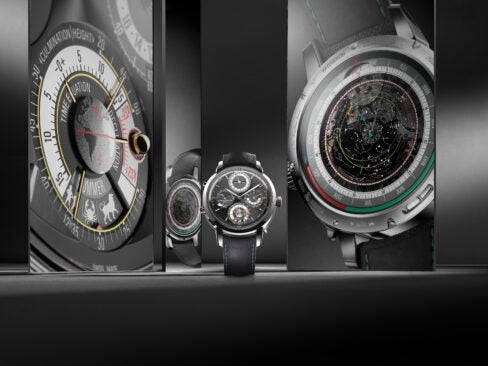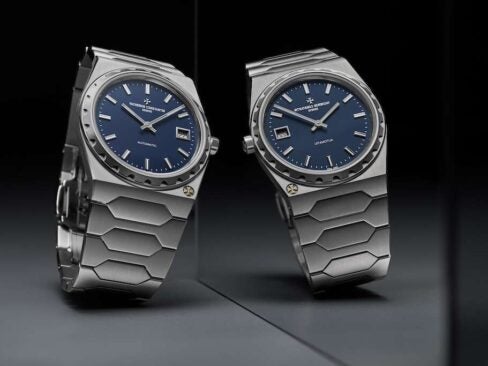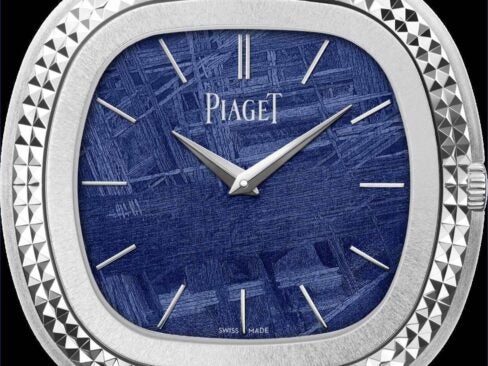
As rare as the equation of time complication is, it’s downright democratic compared to the sidereal time complication. Sidereal time is “star time” (from sidus, “star” in Latin).
As with the equation of time, understanding sidereal time begins with considering how a day is defined. Remember, a day is the amount of time it takes for an object in the sky to return to a given position. For a solar day we use the sun, and we can split the amount of time it takes for the sun to return to a given position (its zenith, say) into 24 equal periods called hours: Thus we have the 24-hour solar day.
As we know from the equation of time, clocks and watches actually use an average of the true solar day called mean (as in average) time. If we want to have all clocks and watches set to the same time across an entire time zone (to avoid changing time every instance you go to a different location) you have to institute civil time, which is the system whereby all clocks are set to a single time standard across an entire time zone.
Sidereal time, as the name implies, doesn’t use the position of the sun in the sky to determine the length of a day. Instead, it uses the position of the stars. Pick a star, note its position in the sky, and when it returns to that position again (like the sun, stars rise and set as the earth rotates), one sidereal day has passed.
The snag is this: A sidereal day and a solar day aren’t the same length; a sidereal day is actually slightly shorter. The reason has to do with the earth’s movement along its orbit around the sun. Remember, as the earth rotates on its axis, it is also moving along its orbital path. That means that for the sun to appear to return to the same position in the sky, against the background of fixed stars, the earth actually needs to rotate slightly more than one full revolution. The stars, on the other hand, are so far away that the earth’s movement along its orbit makes no difference to their apparent position. A solar day, therefore, is just under four minutes longer than a sidereal day, which is approximately 23 hours, 56 minutes and 4.1 seconds long.
A sidereal time indication is of even less use to the average, earthbound watch lover than the equation of time, for which you can at least make the argument that it will help you set your clocks and watches from a sundial in the event of some post-apocalyptic collapse of civilization. The main use for sidereal time is to aid astronomers in aiming telescopes. It is exactly that rarity that has endeared it to fans of astronomical complications.
Only a handful of watches in the world show sidereal time. Patek Philippe’s Reference 5002, famously known as the Sky Moon Tourbillon, is among them. As one of the most complicated watches ever made by Patek—only a limited number of Sky Moon Tourbillons are created annually— at auction they typically sell in excess of a million dollars. In addition to the indication for sidereal time, the watch is a perpetual calendar, has a star chart, shows the age and phase of the moon and is also a minute repeater. Another highly complicated watch showing sidereal time is Jaeger-LeCoultre’s Master Grande Tradition Grande Complication. This watch is unique in using a flying tourbillon mounted on a rotating dial as an hour hand, which indicates sidereal time instead of mean solar time; the latter is shown with a conventional pair of hour and minute hands. The watch also incorporates other astronomical indications including a star chart and an indication showing the position the sun currently occupies in the zodiac. It’s a minute repeater as well.
One of the most unusual sidereal time watches— in fact, one of the most unusual watches in the world—comes from a surprising company: IWC, of Schaffhausen, best known for its historic (and current) production of instrument and pilot’s watches. In 2011, IWC released the Portuguese Sidérale Scafusia. The watch’s dial has a separate indication for sidereal time, as well as a powerreserve indication. The view’s dominated by a large tourbillon fitted with an extremely rare constantforce device, designed to take the energy from the mainspring and modulate it so that an exactly controlled amount of torque is delivered to the escapement, the part of the watch that actually keeps time. This type of instrument, also known as a remontoir d’egalité, has a long history: Such a mechanism was first used in a portable watch by none other than John Harrison, the self-taught English watchmaker who in 1761 created the first practical marine chronometer. On the back, there’s a star chart and indication of the time of sunrise and sunset, customized to the owner’s location, as well as a unique calendar mechanism that shows the number of the day of the year.









